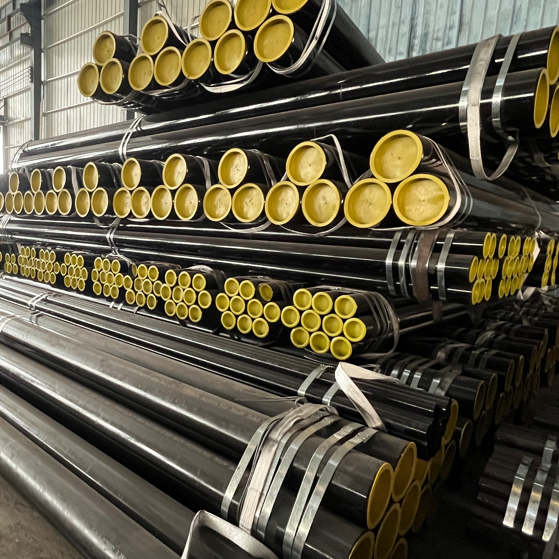 ASTM A106 Thick-walled steel pipe production steps
ASTM A106 Thick-walled steel pipe production steps
Apr .25.2024
ASTM A106 Thick-walled steel pipes: Steel pipes whose outer diameter to wall thickness ratio is less than 20 are called thick-walled steel pipes. It is mainly used as petroleum geological drilling pipes, cracking pipes for the petrochemical industry, boiler steel pipes, bearing steel pipes, and high-precision structural steel pipes for automobiles, tractors, etc.
 Is API 5L Black Steel Pipe Good For Air Lines?
Is API 5L Black Steel Pipe Good For Air Lines?
Apr .23.2024
API 5L Black steel pipe gets its name from the dark, protective iron oxide coating on its surface, which gives it its characteristic black color. It has the advantages of being strong, durable, easy to shape, and cheap. However, black metal pipe has a fatal disadvantage that it is prone to rust, because impurity particles such as corrosive gases.
 8 differences between ASTM A312 304 and 316 stainless steel pipes
8 differences between ASTM A312 304 and 316 stainless steel pipes
Apr .19.2024
ASTM A312 304 stainless steel pipe contains 16% to 24% chromium, as well as small amounts of carbon and manganese. The most common form is 18-8 stainless steel. It contains 18% chromium and 8% nickel. 316 stainless steel pipe has almost the same physical and mechanical properties as 304 stainless steel.

 ASTM A106 Thick-walled steel pipe production steps
ASTM A106 Thick-walled steel pipe production steps
 Shengtian Group successfully participated in the Russian Oil and Gas Exhibition
Shengtian Group successfully participated in the Russian Oil and Gas Exhibition
 Is API 5L Black Steel Pipe Good For Air Lines?
Is API 5L Black Steel Pipe Good For Air Lines?
 8 differences between ASTM A312 304 and 316 stainless steel pipes
8 differences between ASTM A312 304 and 316 stainless steel pipes